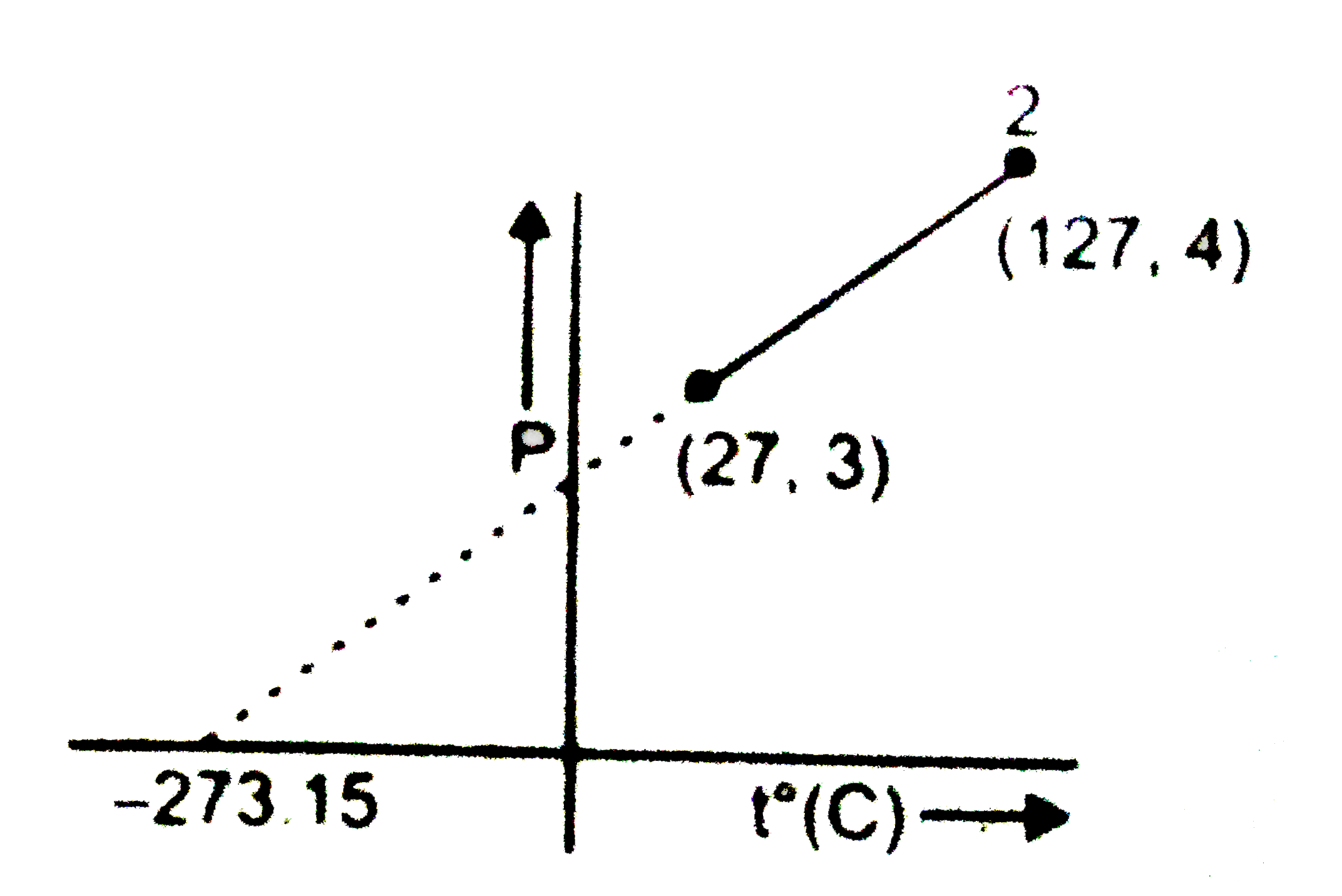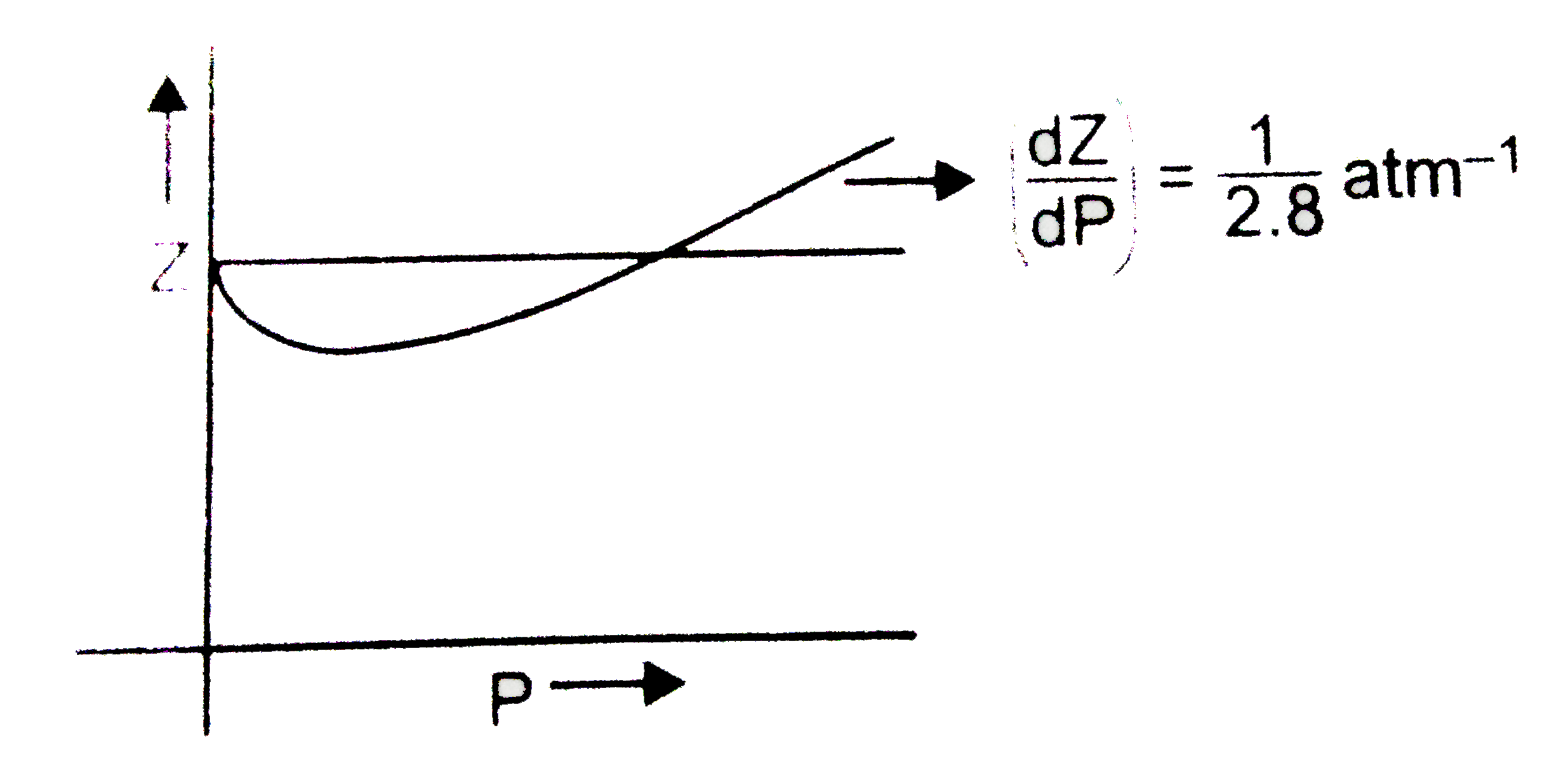Complete Solutions to Subjective problems of chapter GASEOUS STATE of Class 11 book with complete answers and questions
| Class 11 | CHEMISTRY |
| Chapter | GASEOUS STATE |
| NARENDRA AWASTHI | Subjective problems |
| Number Of Questions | 15 |
| Academic Year | 2023-24 |
A bubble of gas released at the bottom of a lake increases to four times its original volume when it reaches the surface. Assuming that atmospheric pressure is equivalent to the pressure exerted by a column of water 10 m high, what is the depth of the lake?
View SolutionA gaseous mixture containing equal mole sof `H_(2),O_(2)` and He is subjected to series of effusion steps. The composition (by moles) of effused mixture after 4 effusion steps is `x:1:y` rspectively. Then find the value of `((x)/(y)).`
View SolutionOne mole of a gas changed from its initial state (15L,2 atm) to final state (4L,10 atm) reversibly. If this change can be represented by a straight line in P - V curve maximum temperature (approximate), the gas attained is `x xx10^(2) K.` Then find the value of x.
View SolutionTwo moles of an ideal gas undergoes the following process. Given that `((delP)/(delT))_(V) "is " x xx10^(+y),` then calculate the value of (x + Y)

View Solution1 mole of a diatomic gas present in 10 L vessel at certain temperature exert a pressure of 0.96 atm. Under similar conditions an ideal gas exerted 1.0 atm pressure. If volume of gas molecule is negligible, then find the value of van der Waals' constant ''a'' (in atm `L^(2)//mol^(2)`).
View SolutionThe graph of compressibility factor (Z) vs. P for one mole of a real gas is shown in following diagram. The graph is plotted at constant temperature 273K. If the slope of graph at very high pressure `((dZ)/(dP))` is `((1)/(2.8))atm^(-1)` , then calculate volume of one mole of real gas molecules (in L/mol)
Given : `N_(A)=6xx10^(23)` and `R=(22.4)/(273)L atmK^(-1)mol^(-1)`

View SolutionUnder the identical conditions of temperature, the density of a gas X is two times to that of gas Y while molecular mass of gas Y is three times that of X. Calculate the ratio of pressure of X and Y.
View SolutionThe time for a certain volume of a gas `A` to diffuse through a small hole is 2 minute If takes 5.65 minute for oxygen to diffuse under similar conditions Find the molecualr weight of `A` .
View SolutionExcess `F_(2)(g)` reacts at `150^(@)C` and 1.0 atm pressure with `Br_(2)(g)` to give a compound `BrF_(n)`. If 423 mL of `Br_(2)(g)` at the same temperature and pressure produced 4.2 g of `BrF_(n)`, what is n? [Atomic mass Br =80, F =19 ]
View SolutionInitially bulb "a" contained oxygen gas at `27^(@)C` and 950 mm of Hg and bulb "B" contained neon gas at `27^(@)C` and 900 mm of Hg. These bulbs are connected by a narrow tube of negligible volume equipped with a stopcock and gases were allowed to mix-up freely. The pressure obtained in the combined system was found to be 910 mm of Hg.

If volume of bulb B was measured to be 10 L, then find the volume of oxygen gas present initially in bulb "A" .
View SolutionAir is trapped in a horizontal glass tube by 36 cm mercury column as shown below :
 If the tube is held vertical keeping the open end up, lengh of air column shrink to 19 cm. What is the lengh (in cm) by which the mercury column shifts down?
If the tube is held vertical keeping the open end up, lengh of air column shrink to 19 cm. What is the lengh (in cm) by which the mercury column shifts down?
View SolutionA flask containing air at `107^(@)C` and 722 mm of Hg is cooled to 100 K and 760 mm of Hg. If density in the initial condition `1g//cm^(3)`, then what is the final density `(g//cm^(3))`?
View SolutionIf an ideal gas at 100 K is heated to 109 K in a rigid container, the pressure increases by X%. What is the value of X?
View SolutionThe van der Waals' constantes for a gas are `a=3.6 atmL^(2)mol^(-2),b=0.6Lmol^(-1)` .If `R=0.08LatmK^(-1)mol^(-1)` and the Boyle's temperature (K) is `T_(B)` of this gas, then what is the value of `(T_(B))/(15)`?
View SolutionA flask has 10 molecules out of which four molecules are moving at `7 ms^(-1)` and the remaining ones are moving at same speed of `X ms^(-1)`. If rms of the gas is `5 ms^(-1)`, what is `X` ?
View Solution
Subjective problems questions and complete solutions for chapter GASEOUS STATE of NARENDER AVASTHI CHEMISTRY (ENGLISH) of Class 11